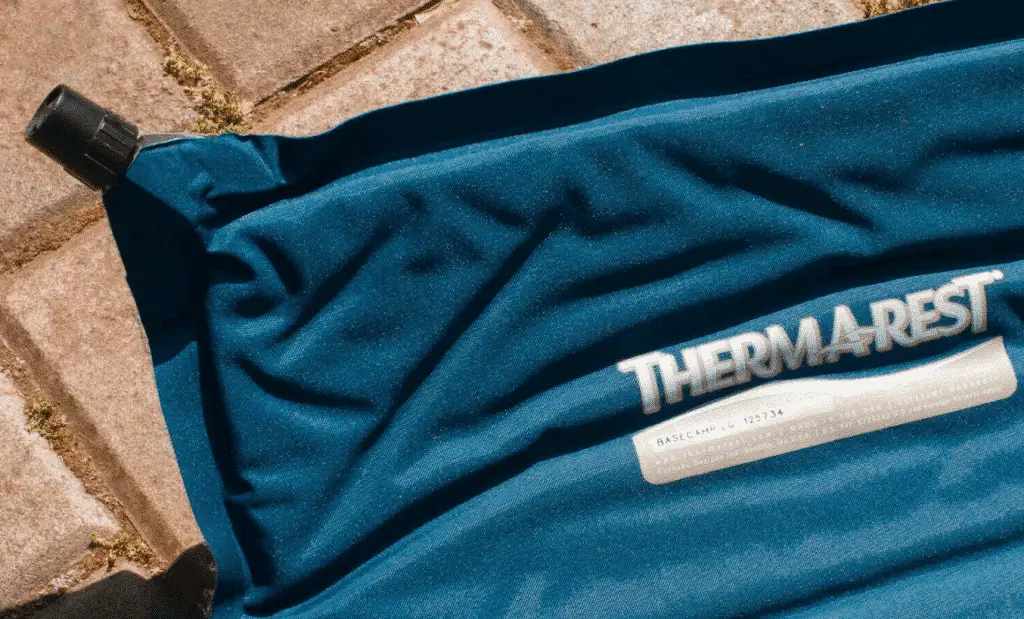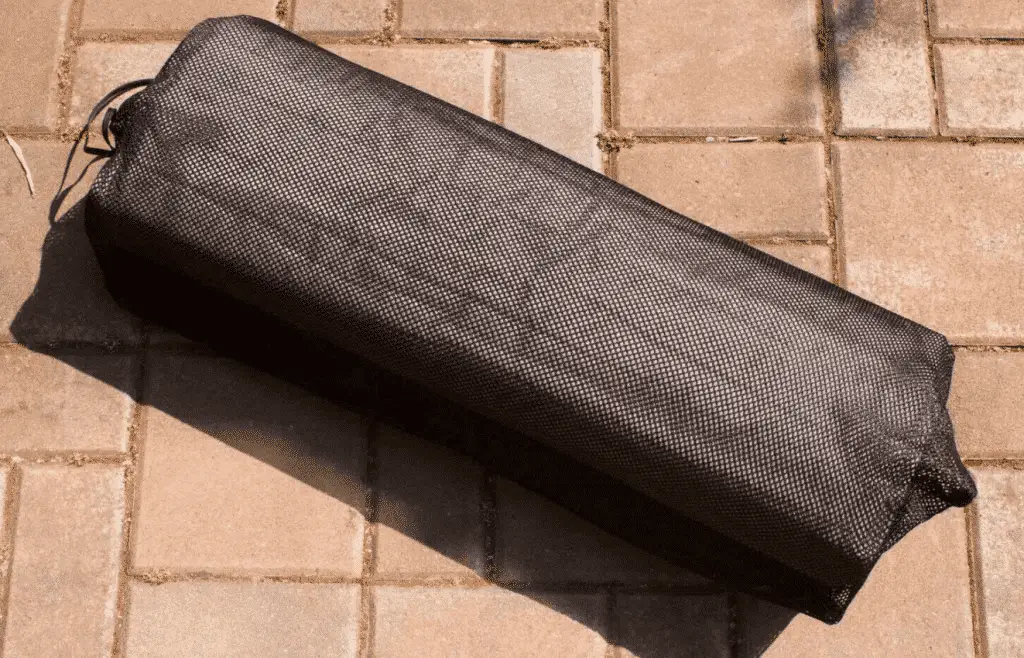Self inflating sleeping pads are the perfect choice for campers and backpackers. They’re lightweight, pack down tight and increase your sleep systems R-Value.
How do self inflating sleeping pads work if they don’t rely on pumps? You don’t need a pump to inflate a self inflating sleeping pad, just open up the air valve. The foam will start to expand as air rushes back inside and close the valve. Once you’re done tightly roll the pad and force the air back out of the foam.
The results are in and backpackers across the world agree that self-inflating sleeping pads are well worth the price. They’re extremely portable, durable and great to sleep on. You really can’t go wrong with a self-inflating pad.
What is a Self-Inflating Sleeping Pad?
Self-inflating sleeping pads are just one of those items that people don’t understand. You open up the valve and all of a sudden it magically fills up with air. How do self-inflating sleeping pads work?
I bought the Therm-a-Rest Basecamp Self-Inflating Pad, but they all work the same way. It’s basically just a compressible foam pad sandwiched between airtight plastic with an intake valve.
As you open up the intake valve the foam expands sucking air into the mat. The rest of this article will teach you how to use a self inflating mat.
When compared to traditional blow-up sleeping mats, self-inflating pads usually weigh a little more. Most of that additional weight comes from the addition of a cell-foam pad.
How Do Self Inflating Mats Work?

Unfortunately, I’m not a scientist so I definitely can’t get into the finite details of what makes a self-inflating sleeping pad work. So I’ll skip all that boring stuff and give you my non-professional opinion. It’s actually a surprisingly simple concept when you start to think about it.
Have you ever seen a memory foam mattress compressed inside a vacuum sealed plastic bag? Cut a slit in the bag and the foam rapidly expands quadrupling in size. That’s basically the same way inflatable sleeping pads work.
The foam both provides insulation and works as a built-in pump. Combined with the sealed fabric you have an extremely comfortable sleep system.
They’re just open-cell foam pads surrounded by an airtight plastic case. When the pad is compressed, with the air valve closed, the air is unable to get in. Opening up the valve lets air back inside. Force the air out to collapse the pad for easy transport.
Using a Self Inflating Sleeping Pad

Using a self inflating pad is surprisingly easy. You don’t need a pump or any other outside tools. It all comes down to controlling air flow with the valve (look at the valve in the picture above).
The expansion starts as soon as you open up the valve. It unseals the bag and re-introduces air to the foam. As the foam expands it sucks in the air creating a vacuum effect and fills up the plastic case.
Air is quickly sucked in filling in the spaces between the rapidly expanding foam. This takes a minute or two so set your mat off to the side and go about your business.
Once your sleeping pad is somewhat firm you can either shut the valve or top it off. Blow a few puffs of fresh air into the valve and you’re good to go. Close the valve and set up the rest of your sleep system.
Don’t forget to close the air valve (I’ve made this mistake)! This traps air inside the foam cells keeping the foam inflated.
Check out my post on how much air you need in a sleeping pad.
Deflating The Pad

Deflating the pad and getting it back inside the storage bag is the tricky part. You have to roll the pad up tight forcing the air back outside. It’s kind of like rolling the last bit of toothpaste out of a tube.
- Start off by opening up the air valve and laying the mat out flat.
- Go to the opposite end of the air valve and get down on your knees straddling the bag.
- Use your knees and body weight to roll the bag up tight. This forces air out of the foam cells compressing the pad. It has to be really tight or else you won’t get it inside your storage bag.
- Once the bag is rolled up tight shut your air valve and work the pad into the storage bag. Getting the pad back in won’t be easy. You might need to re-roll the pad if it doesn’t fit.
Why Should I Choose a Self Inflating Sleeping Pad?
With so many other options on the market, why choose a self inflating pad?They are mostly used by backpackers trying to lighten their load without sacrificing comfort.
- They’re easier to store/carry than a traditional foam pad and way more comfortable. It rolls down into a lightweight compact package.
- Combines the comfort of an inflatable pad with the warmth and durability of a foam pad.
- More durable than even the most expensive inflatable pad. You still have a foam pad even if the outside shell rips. It basically turns into a heavy foam pad.
- You don’t need to carry a pump or any other accessories.
There’s two major downsides to using an inflatable pad. They’re both heavier and way more expensive than similar quality alternatives. Coleman makes a cheap self inflating pad, but it’s not as comfortable and pretty heavy.
Self-Inflating Pads are Warmer Than Air Mats
If you do any cold weather camping you probably know the problem I have with standard air mats. They just don’t have a high enough R-Value to be used in cold weather. The large air tubes, although very comfortable, allow a lot of convection cooling. It’s not as bad as going without a pad, but it’s still cold.
Self-inflatables were designed to get around that convection problem. Since they use an open-cell foam inside the shell, you get the comfort of an inflatable with the insulation of a foam pad. Just roll it up, force the air out, close the valve, and it’s a compact pad for backpacking. Although it’s a little heavier than traditional air mats you get way more insulation.




